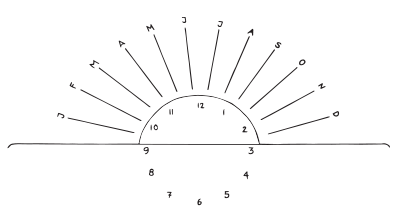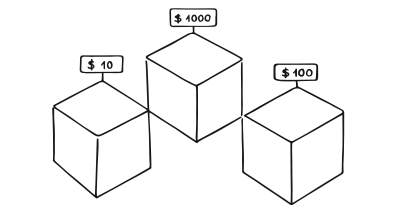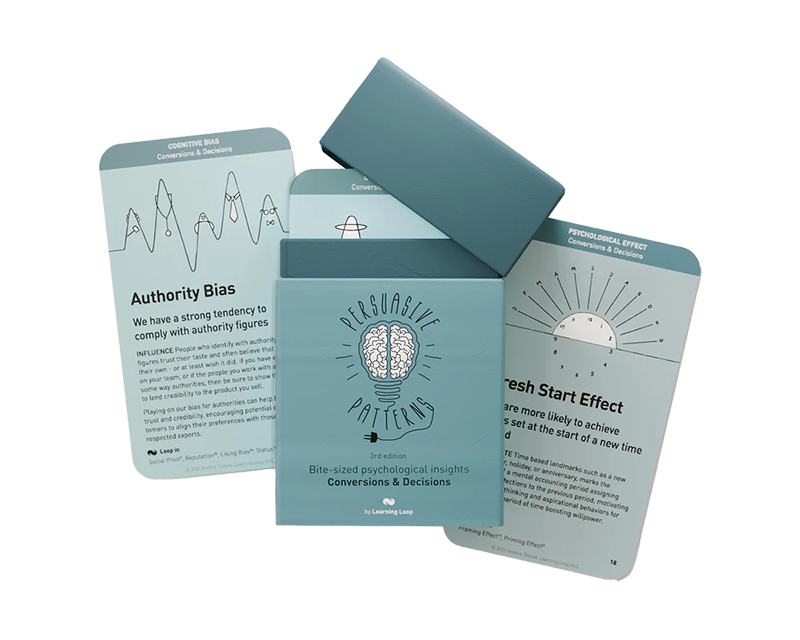
The Nostalgia Effect refers to the emotional or psychological impact experienced when a product, service, or experience evokes memories from the past, often producing feelings of warmth, comfort, and longing.
Imagine walking through a bustling weekend market. Amongst the myriad of stalls, one particular setup catches your attention. It’s filled with vintage toys and collectibles from the ’80s and ’90s. As you scan the items, your eyes land on a familiar action figure – one you owned and cherished during your childhood. Memories of endless summer afternoons, playing imaginative games with that very toy, flood your mind. You check the price tag and find that it’s quite a bit more expensive than you’d expect for an old toy. However, the emotional pull, the urge to relive those carefree days, makes you downplay the cost. You end up purchasing the action figure, valuing the sentimental connection over the monetary expense.
Imagine you’re scrolling through your social media feed one morning. Between the latest updates and shared articles, a different kind of post catches your eye. The app has resurfaced a photo you uploaded exactly ten years ago today, adorned with a caption that reads, “A trip down memory lane.” It’s a snapshot from a college trip with friends, a moment frozen in time. As you gaze at younger versions of yourself and your friends, memories of laughter, inside jokes, and spontaneous adventures fill your thoughts. The emotions are overwhelming, and without thinking, you hit the ‘share’ button, adding a nostalgic comment about the good old days.
The social media platform, by leveraging the Nostalgia Effect, has not only increased user engagement but has also encouraged you to share and reminisce. By reminding users of their past and the journey they’ve had on the platform, it fosters a deeper connection and loyalty to the app. However, it’s essential for such platforms to ensure they handle these memories with care and respect, understanding the profound emotional impact they can have.
A study on the weakened desire for money
One of the seminal studies in the realm of nostalgia and its influence on consumer behavior was conducted by Lasaleta, Sedikides, and Vohs in 2014. Their research found a fascinating link between nostalgia and financial decisions. Specifically, they discovered that nostalgia weakens the desire for money. This insight provides a profound understanding of why nostalgia is so prevalently used in marketing: it has the power to make consumers more willing to part with their money. This effect underscores the persuasive potential of the nostalgia effect, especially in contexts where financial decisions are at play.
B. Lasaleta, J. D., Sedikides, C., & Vohs, K. D. (2014). Nostalgia Weakens the Desire for Money. Journal of Consumer Research, 41(3), 713-729.
The Nostalgia Effect operates based on our inherent desire for social connection and belongingness. By recalling past memories, especially those that were emotionally significant, we can temporarily satiate this need, leading to a range of positive emotions, including increased self-esteem and optimism.
A study on the weakened desire for money
In a groundbreaking study, researchers delved into the psychological impacts of nostalgia. Participants were prompted to recall a nostalgic event and describe it. Subsequent measures revealed that indulging in such reminiscing made participants feel more socially connected to others. This feeling of connection and belongingness, in turn, elevated their self-esteem, imbuing participants with a sense of worthiness and optimism about the future. This study was pivotal in demonstrating how the Nostalgia Effect could influence our perceptions and feelings in the present moment by connecting us to our past.
Wildschut, T., Sedikides, C., Arndt, J., & Routledge, C. (2006). Nostalgia: Content, triggers, functions. Journal of Personality and Social Psychology, 91(5), 975.
Nostalgia is a powerful emotion that can create a deep connection between users and products. This emotional pull towards our cherished memories tends to weaken our innate desire to save, fostering instead a heightened sense of social connectedness. It triggers memories of a time perceived as simpler, happier, or more meaningful. When properly used, the Nostalgia Effect can enhance user engagement, foster loyalty, and increase overall satisfaction. The key lies in striking a balance between evoking the past while remaining relevant and functional in the present.
Designing products with the Nostalgia Effect
For a successful application of the Nostalgia Effect, it’s essential to genuinely connect users to their past experiences rather than superficially inserting nostalgic elements. Start by understanding your target demographic’s generational touchpoints. These could be cultural, musical, technological, or related to any shared experiences. Once identified, weave them into the product interface or the user journey in ways that evoke fond memories without overwhelming the primary functionality.
For platforms that track user data over time, personalized trips down memory lane, showcasing user’s past interactions or achievements, can be powerful. However, always ensure you have consent to use personal data in this manner.
Brands with a long history or those that have become cultural icons can leverage the Nostalgia Effect to reinforce their identity and maintain a loyal customer base. By reminding users of past experiences with the brand, or by associating the brand with positive memories from a bygone era, companies can create a deeper emotional connection and differentiate themselves from newer competitors.
As you incorporate the Nostalgia Effect and evoke positive memories, it’s equally crucial to ensure that the product or service remains up-to-date and continues to meet the current needs and preferences of users. Over-reliance on nostalgia without offering contemporary relevance can make a product feel outdated or irrelevant. Ethically, it’s also imperative not to manipulate users by overly romanticizing the past or presenting a distorted version of it.
Nostalgia paints our memories with a positive brush, making past events seem rosier than they perhaps were. This warm and fuzzy feeling not only fosters social connectedness but also reduces feelings of loneliness and amplifies prosocial behaviors. However, money has the contrasting effect of promoting isolation.
- Using nostalgia for positive outcomes
While brands like PepsiCo and General Mills have historically capitalized on nostalgia in their advertising, understanding the deeper mechanics of this effect can lead to more potent and strategic applications. By tapping into nostalgia, social marketers can promote prosocial behaviors, such as charity donations, event participation, or volunteer recruitment. - Building social depth
Nostalgia can be a powerful tool for products and services that focus on social connections. Platforms like Tinder, Timehop, or social media trends like #throwbackthursday (#tbt) on Instagram and Twitter are prime examples of this effect in action. As digital social media archives grow, the potential to leverage the nostalgia effect expands. - Political implications
The nostalgia effect isn’t confined to consumer behavior alone. It also has potential in political campaigning and donations. A Gallup poll indicated that individuals from Generation X and baby boomers tend to idealize presidents from their teenage years, highlighting nostalgia’s enduring impact on decision-making.
Common pitfalls when applying the Nostalgia Effect typically include:
- Over-reliance on stereotypes
While certain elements might be nostalgic for a segment of your user base, they might not resonate with everyone. Relying too heavily on broad stereotypes can alienate users who don’t share those memories. - Forcing nostalgia
Inserting nostalgic elements where they don’t naturally fit can feel forced and inauthentic. It’s crucial to integrate nostalgia seamlessly. - Neglecting modern design principles
While evoking the past, it’s essential to ensure the product still adheres to modern design principles. Users might enjoy a trip down memory lane, but they still expect contemporary usability standards.
It’s vital to understand the age group and cultural background of the target audience. What feels nostalgic to one demographic might not resonate with another.
Ethical recommendations
The Nostalgia Effect, with its profound influence on behavior, holds the potential for misuse in various scenarios. One primary concern centers around the manipulation of emotions. Opportune businesses might inadvertently (or intentionally) exploit users’ emotional vulnerabilities by excessively employing nostalgic triggers. When leveraged without restraint, this can result in users making decisions predominantly based on emotion, potentially leading to choices they might later regret.
Additionally, there is a risk in the way the past is portrayed. Using nostalgia can sometimes result in painting a past era in an overly rosy hue, or even presenting it inaccurately. This could cause users to form distorted perceptions or beliefs about events or times they might not have directly experienced.
Together, these elements can culminate in an environment where users feel unduly influenced, causing them to bypass their usual decision-making processes and act so much on impulse that it goes against their well-being. Such a scenario is not just detrimental to the user but can also erode trust in the long run.
To ensure the ethical application of the Nostalgia Effect, remember:
- Transparency
Always be truthful in your representations. If using historical or past events, ensure accuracy in portrayal. - Balance emotion with information
While nostalgia can evoke strong feelings, it’s crucial to provide users with all necessary information to make informed decisions. - Respect boundaries
Recognize that not all memories are positive for everyone. Be sensitive to potential negative associations and avoid generalizing experiences across diverse user groups. - User well-being
Always prioritize the well-being and best interests of the user. The goal should be to enhance their experience genuinely, not just to drive sales or engagement metrics.
Real life Nostalgia Effect examples
Nintendo
Nintendo, the renowned gaming company, re-released classic consoles, complete with beloved games from the past. These products were instantly popular, striking a chord with those who had grown up playing these games.
This feature shows users posts and photos from the same date in previous years, providing a daily dose of nostalgia as users recall moments they’d shared in the past.
LEGO
LEGO occasionally re-releases iconic past sets, connecting with the fond memories of adult fans and introducing timeless designs to younger enthusiasts.
Trigger Questions
- What shared experiences resonate with our target demographic, and how can we authentically weave them into the design?
- How can we represent the past truthfully, without romanticizing or distorting it?
- How can we evoke nostalgia while also providing clear, actionable information to the user?
- How can we ensure my nostalgic elements resonate positively with diverse user groups without causing unintentional offense?
- How can we blend nostalgic elements while maintaining modern functionality and relevance?
Pairings
Nostalgia Effect + Storytelling
When narratives integrate elements from the past, they become more relatable and resonate with users on a personal level. For instance, a brand might use storytelling in its marketing campaigns by narrating a tale set in a bygone era, invoking nostalgic feelings among its audience.

Reminiscing about the past makes us downplay costs

We engage, understand, and remember narratives better than facts alone
Nostalgia Effect + Triggers
Incorporating nostalgic cues or reminders can serve as effective triggers. For example, Spotify’s “Time Capsule” playlist, which curates songs from a user’s teenage years, acts as a nostalgic trigger, encouraging more extended listening sessions.

Reminiscing about the past makes us downplay costs

Place cues on our regular paths to remind and motivate us to take action
Nostalgia Effect + Status-Quo Bias
Combining the Nostalgia Effect with Status Quo Bias can make users more inclined to stick to familiar products or services reminiscent of the past, resisting changes or upgrades. An example would be a software company launching a “classic” version of its product, appealing to those users who are hesitant to adapt to newer versions.

Reminiscing about the past makes us downplay costs

We prefer the current state instead of comparing actual benefits to actual costs
Nostalgia Effect + Fresh Start Effect
Merging the Nostalgia Effect with the Fresh Start Effect can encourage users to revert to old, positive behaviors. A fitness app, for instance, might remind users of their peak fitness levels or routines from a couple of years ago, motivating them to restart their fitness journey with renewed vigor.

Reminiscing about the past makes us downplay costs

We are more likely to achieve goals set at the start of a new time period
Nostalgia Effect + Reciprocity
Infusing the power of nostalgia with reciprocity can foster deeper connections with users. For instance, a travel agency might send an email to past customers saying, “Remember that epic summer trip? As a token of our appreciation for your loyalty, here’s a special discount for your next adventure with us!”

Reminiscing about the past makes us downplay costs

We feel obliged to give when we receive
Nostalgia Effect + Anchoring Bias
When paired with the Nostalgia Effect, anchoring can be particularly potent. By setting an artificially high emotional value through nostalgia, users might be anchored to that elevated emotional perception. For instance, a luxury watch brand might remind its customers of a classic watch model worn by their grandparents, emphasizing its timeless value and elegance. Following this, the brand could introduce its latest model at a high price point. Due to the nostalgic anchor, customers might perceive the new watch’s price as justified, given the emotional significance attached to the older model.

Reminiscing about the past makes us downplay costs

We tend to rely too heavily on the first information presented
A brainstorming tool packed with tactics from psychology that will help you increase conversions and drive decisions. presented in a manner easily referenced and used as a brainstorming tool.
Get your deck!- Nostalgia Weakens the Desire for Money by Lasaleta, Sedikides & Vohs
- Nostalgia Effect
- B. Lasaleta, J. D., Sedikides, C., & Vohs, K. D. (2014). Nostalgia Weakens the Desire for Money. Journal of Consumer Research, 41(3), 713-729.
- Wildschut, T., Sedikides, C., Arndt, J., & Routledge, C. (2006). Nostalgia: Content, triggers, functions. Journal of Personality and Social Psychology, 91(5), 975.
- Hepper, E. G., Ritchie, T. D., Sedikides, C., & Wildschut, T. (2012). Odyssey's end: Lay conceptions of nostalgia reflect its original Homeric meaning. Emotion, 12(1), 102-119.
- Zhou, X., Sedikides, C., Wildschut, T., & Gao, D. G. (2008). Counteracting loneliness: On the restorative function of nostalgia. Psychological Science, 19(10), 1023-1029.
- Juhl, J., Wildschut, T., Sedikides, C., Xiong, X., & Zhou, X. (2020). Nostalgia promotes help seeking by fostering social connectedness. Emotion.
- Zhou, X., Wildschut, T., Sedikides, C., Shi, K., & Feng, C. (2012). Nostalgia: The Gift That Keeps on Giving. Journal of Consumer Research, 39, 39-50.
- Stephan, E., Wildschut, T., Sedikides, C., Zhou, X., He, W., Routledge, C., ... & Vingerhoets, A. J. (2014). The mnemonic mover: Nostalgia regulates avoidance and approach motivation. Emotion, 14(3), 545-561.
- Carver, C. S., & Scheier, M. F. (2004). Perspectives on personality (5th ed.). Boston: Allyn and Bacon.
- Sedikides, C., & Wildschut, T. (2019). The sociality of personal and collective nostalgia. European Journal of Social Psychology, 49(6), 1202-1216.
- Routledge, C., Arndt, J., Sedikides, C., & Wildschut, T. (2008). A blast from the past: The terror management function of nostalgia. Journal of Experimental Social Psychology, 44(1), 132-140.
